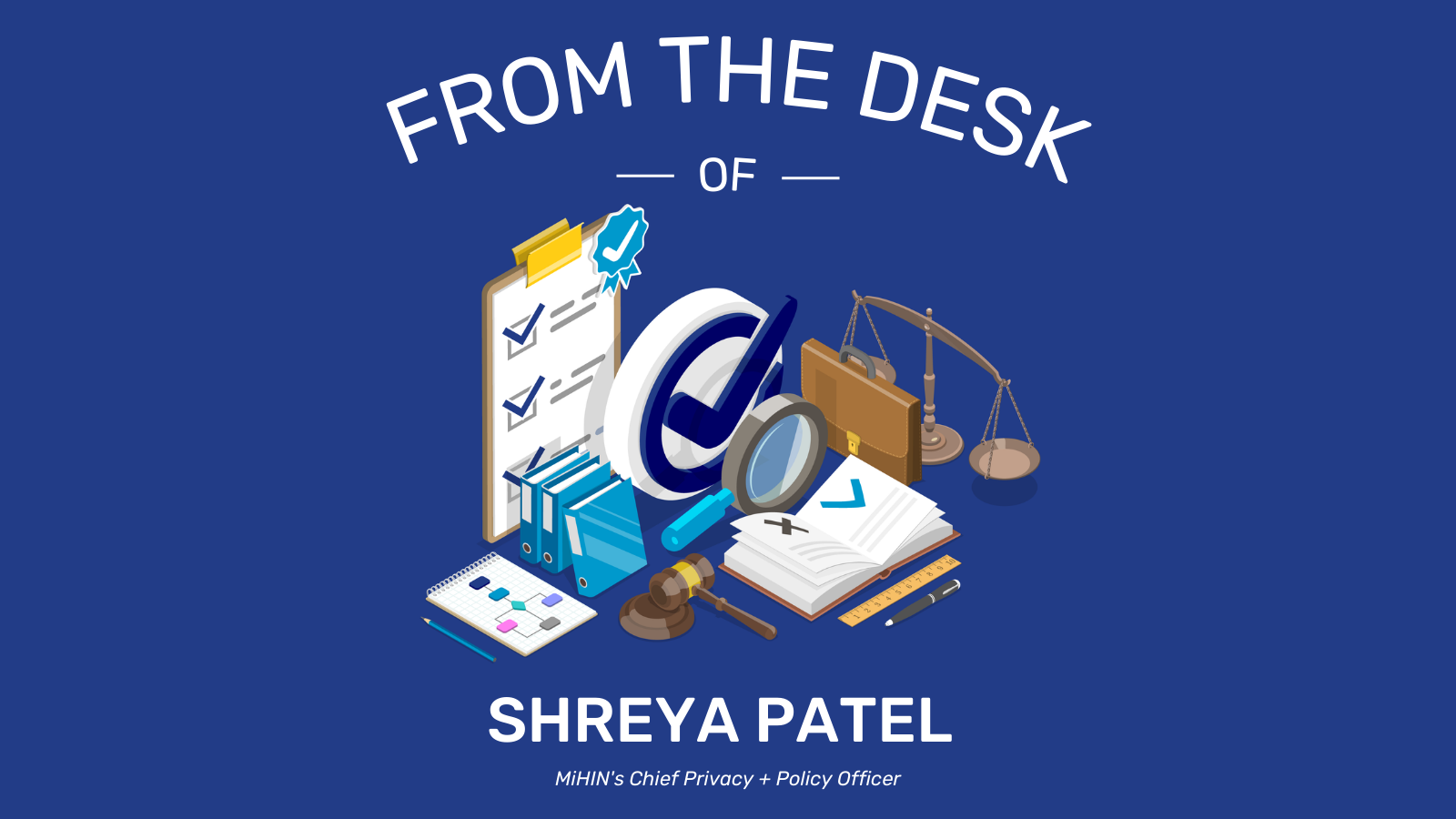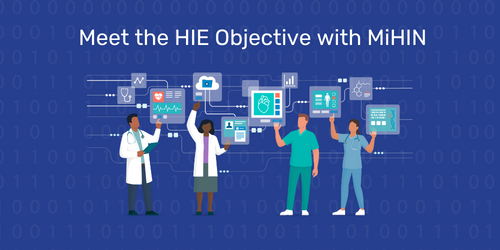HINfluence
Thought Leadership Blog. Click a post title below to open it.
From the Desk of Shreya Patel – Information Blocking Rule Update from MiHIN

On September 30, 2022, the Office of the National Coordinator for Health Information Technology’s (ONC) released recent guidance surrounding the Information Blocking Rule through a Blog Post on their website.
In the blog post, the ONC stated they would be launching an dedicated webpage toward information blocking, which would be live on October 6. Further, they emphasized that actors under the rule could expect to see “periodic, experience- driven updates” to the rule as time went on.
In line with the latter point, the ONC released eight reminders, which similarly seem to arise from events that may have been reported over the past two year compliance period. These reminders include:
- The information blocking (IB) definition’s limitation on the scope of electronic health information (EHI) is lifted as of October 6, 2022.
- IB actors’ practices include acts and omissions.
- The information blocking regulations’ exceptions are not solely “one size fits all” and address the facts and circumstances of the situation at hand.
- Not all health information that’s electronic is EHI under the regulatory definition. And if such information is not EHI, then it’s not covered by the information blocking regulations.
- How IB actors make EHI available for access, exchange, and use can and will vary based on who the IB actor is, their technological sophistication, and who it is that is seeking to access, exchange or use an IB actor’s EHI.
- Information blocking is about “the data” (i.e., EHI) regardless of whether ONC-certified health IT is involved.
- Use of certain information blocking exceptions by actors will provide clear notification to requestors whether their request to access, exchange, or use EHI is delayed or denied.
- Information blocking claims are confidential and restricted from public disclosure.
In addition to these reminders, the ONC has released information on the number of Information Blocking claims that have been brought over the past two years, and what is notable in the HIE space is no claims have been brought against HIEs in 2022. As a reminder, HIEs such as (MIHIN/ VHIEC) have been striving for greater, secure information sharing. We have not only completed a deep dive of the information to make sure our own entity is not engaging in Information Blocking practices, but also released informational packets to help our Stakeholders to comply themselves.
For more information about Information Blocking and MiHIN’s analysis and action on this rule, please contact help@mihin.org Attn: Shreya Patel.
From the Desk of Shreya Patel – TEFCA Update from MiHIN

The Sequoia Project, the entity charged with operationalizing the framework for national interoperability titled the Trusted Exchange Framework and Common Agreement (TEFCA), has released a Standard Operating Procedure (SOP) on how Individual Access Service Providers (IAS) and actors under the framework will have to respond to Individual requests for information.
MiHIN was able to read through this SOP, which predominantly revolves around identity verification and the best practices IAS Providers must use when they receive requests from individuals. IAS Providers must have a credential service provider (CSP) that is approved by Sequoia Project as the RCE and the identity proofing must meet NIST IAL2 (Identity Assurance Level 2), which is defined under NIST SP800-63A. Additionally, the SOP delves into minimum and additional demographic categories IAS Providers are required and should use respectively.
What is perhaps most noteworthy about this SOP, however, is the guidance they have given on if Qualified Health Information Networks, Participants, and Sub participants are required to respond to all IAS requests. As an HIE or HIN, most entities have not been directly responsible for IAS requests due to the lack of direct relationships with individuals and identity verification concerns. Most requests are coordinated with the Providers or other entities connected to HIEs and HINs, who direct them to share the information for the individual. This would all change under TEFCA because the SOP states, if an actor under the framework receives a QHIN query that meets the demographic/ technical requirements above and has an acceptable patient match, they are required to respond with the Required Information per the Common Agreement, QTF, and Exchange Purposes SOP. The SOP also states, a responder’s patient match shall not require more than the demographic items listed above unless required by law.
Under this new guidance, it will be imperative that entities participating in TEFCA, particularly those without the infrastructure to handle IAS requests, work with an IAS provider to meet these requests.
For more information about TEFCA and this SOP please contact help@mihin.org Attn: Shreya Patel.
MiHIN Can Help You Meet the HIE Objective!

On August 1, CMS issued the final 2023 Inpatient Prospective Payment Systems (IPPS) for Acute Care Hospitals and the Long-Term Care Hospital (LTCH) Prospective Payment System (PPS) Rule, which MiHIN had provided extensive comments for earlier this summer.
For those who are unaware of what the IPPS and LTCH PPS rules are, they are the way Inpatient and Long Term Care hospitals set prospective rates for hospital stays dependent on services provided. These rules are pertinent for our stakeholders because compliance with them dictates if they will be able to receive federal funding, which most organizations are heavily reliant on.
This year changes to the rule included the incorporation of measures on maternal health and adverse events during childbirth, dedicated measures on how an entity furthers Health Equity, Social Determinants of Health and Health Related Social Needs, a mandatory measure on queries to the Prescription Drug Monitoring Program (PDMP), and requests for information on incentives for participation in the Trusted Exchange Framework and Common Agreement (TEFCA).
While we would be happy to provide our comment letter and summary on the content of the rule itself, there is one area where we can directly help our stakeholders: The HIE Objective measure, worth 30 points of a hospitals score. There are three ways an entity care meet this score. The first option is to report on Sending and Receiving Health Information through Support of Electronic Referral Loops. The second option is to report on the HIE Bi-Directional Exchange measure. Most of our stakeholders used this measure last year, as it changed to a simple yes/ no response. MiHIN is able to supplement that response with an attestation letter stating they are connected to our HIE Network and engaged in bi-directional exchange. The third option is to report on the Enabling Exchange Under TEFCA measure, which again is a simple yes or no, but states the entity is a signatory under the TEFCA framework. This last option, although new, may be complicated without QHINs established to connect to but they do have requirements for what this would mean if stakeholders are interested in more information.
We urge our MiHIN stakeholders to reach out to us at help@mihin.org (Attn: Shreya Patel) if they require an attestation letter on the second option for the HIE Objective and if they have any additional questions on changes to the IPPS and LTCH PPS.
